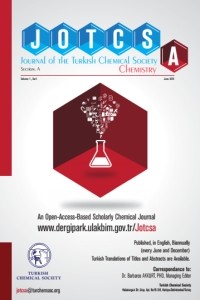Abstract
In
this work, we report a parameterization procedure to compute the parameters of
a hydrogel consisting of a hydrophilic polymer and a cross-linker. The system is
parameterized so that coarse-grained dissipative particle dynamics (DPD)
simulations can be performed. Proper computation of the simulation parameters is crucial
in order to represent the inherent chemical nature of the hydrogel and to model
the correct structure. The polymer is parameterized by considering different
volumes for coarse-grained beads. Moreover, the hydrogen bond interactions
should be represented and properly defined in the simulations. To that purpose,
we use a recently introduced parameterization procedure that incorporates the
attraction as a result of the hydrogen bond interactions between relevant beads.
This paper serves as an example of how the realistic simulation parameters of a
hydrophilic polymer can be straightforwardly computed by leading to a proper
determination of the structure and properties. The computational background,
the procedures and the results of the computation are reported and discussed in
this paper.
References
- Peppas NA, Hilt JZ, Khademhosseini A, Langer R. Hydrogels in biology and medicine: From molecular principles to bionanotechnology. Adv Mater. 2006;18(11):1345-60.
- Lin CC, Metters AT. Hydrogels in controlled release formulations: Network design and mathematical modeling. Adv Drug Deliver Rev. 2006;58(12-13):1379-408.
- Drelich J, Chibowski E, Meng DD, Terpilowski K. Hydrophilic and superhydrophilic surfaces and materials. Soft Matter. 2011;7(21):9804-28.
- Banerjee I, Pangule RC, Kane RS. Antifouling Coatings: Recent Developments in the Design of Surfaces That Prevent Fouling by Proteins, Bacteria, and Marine Organisms. Adv Mater. 2011;23(6):690-718.
- Shirafkan A, Woodward EG, Port MJA, Hull CC. Surface Wettability and Hydrophilicity of Soft Contact-Lens Materials, before and after Wear. Ophthal Physl Opt. 1995;15(5):529-32.
- Hoogerbrugge PJ, Koelman JMVA. Simulating Microscopic Hydrodynamic Phenomena with Dissipative Particle Dynamics. Europhys Lett. 1992;19(3):155-60.
- Boek ES, Coveney PV, Lekkerkerker HNW, vanderSchoot P. Simulating the rheology of dense colloidal suspensions using dissipative particle dynamics. Phys Rev E. 1997;55(3):3124-33.
- Kacar G, Atilgan C, Ozen AS. Mapping and Reverse-Mapping of the Morphologies for a Molecular Understanding of the Self-Assembly of Fluorinated Block Copolymers. J Phys Chem C. 2010;114(1):370-82.
- Kacar G, Peters EAJF, de With G. Structure of a Thermoset Polymer near an Alumina Substrate as Studied by Dissipative Particle Dynamics. J Phys Chem C. 2013;117(37):19038-47.
- Kacar G, Peters EAJF, de With G. A generalized method for parameterization of dissipative particle dynamics for variable bead volumes. EPL. 2013;102(4).
- Kacar G, Peters EAJF, de With G. Mesoscopic simulations for the molecular and network structure of a thermoset polymer. Soft Matter. 2013;9(24):5785-93.
- Can H, Kacar G, Atilgan C. Surfactant formation efficiency of fluorocarbon-hydrocarbon oligomers in supercritical CO2. J Chem Phys. 2009;131(12).
- Zeng QH, Yu AB, Lu GQ. Multiscale modeling and simulation of polymer nanocomposites. Prog Polym Sci. 2008;33(2):191-269.
- Kacar G, de With G. Hydrogen bonding in DPD: application to low molecular weight alcohol-water mixtures. Phys Chem Chem Phys. 2016;18(14):9554-60.
- Groot RD, Warren PB. Dissipative particle dynamics: Bridging the gap between atomistic and mesoscopic simulation. J Chem Phys. 1997;107(11):4423-35.
- Flory PJ. Principles of Polymer Chemistry. Ithaca, New York: Cornell University Press; 1953.
- van Krevelen DW. Properties of Polymers. Amsterdam: Elsevier; 1990.
- Molecular Modeling Pro. 6.3.3 ed: Norgwyn Montgomery Software Inc.; 1992.
Abstract
References
- Peppas NA, Hilt JZ, Khademhosseini A, Langer R. Hydrogels in biology and medicine: From molecular principles to bionanotechnology. Adv Mater. 2006;18(11):1345-60.
- Lin CC, Metters AT. Hydrogels in controlled release formulations: Network design and mathematical modeling. Adv Drug Deliver Rev. 2006;58(12-13):1379-408.
- Drelich J, Chibowski E, Meng DD, Terpilowski K. Hydrophilic and superhydrophilic surfaces and materials. Soft Matter. 2011;7(21):9804-28.
- Banerjee I, Pangule RC, Kane RS. Antifouling Coatings: Recent Developments in the Design of Surfaces That Prevent Fouling by Proteins, Bacteria, and Marine Organisms. Adv Mater. 2011;23(6):690-718.
- Shirafkan A, Woodward EG, Port MJA, Hull CC. Surface Wettability and Hydrophilicity of Soft Contact-Lens Materials, before and after Wear. Ophthal Physl Opt. 1995;15(5):529-32.
- Hoogerbrugge PJ, Koelman JMVA. Simulating Microscopic Hydrodynamic Phenomena with Dissipative Particle Dynamics. Europhys Lett. 1992;19(3):155-60.
- Boek ES, Coveney PV, Lekkerkerker HNW, vanderSchoot P. Simulating the rheology of dense colloidal suspensions using dissipative particle dynamics. Phys Rev E. 1997;55(3):3124-33.
- Kacar G, Atilgan C, Ozen AS. Mapping and Reverse-Mapping of the Morphologies for a Molecular Understanding of the Self-Assembly of Fluorinated Block Copolymers. J Phys Chem C. 2010;114(1):370-82.
- Kacar G, Peters EAJF, de With G. Structure of a Thermoset Polymer near an Alumina Substrate as Studied by Dissipative Particle Dynamics. J Phys Chem C. 2013;117(37):19038-47.
- Kacar G, Peters EAJF, de With G. A generalized method for parameterization of dissipative particle dynamics for variable bead volumes. EPL. 2013;102(4).
- Kacar G, Peters EAJF, de With G. Mesoscopic simulations for the molecular and network structure of a thermoset polymer. Soft Matter. 2013;9(24):5785-93.
- Can H, Kacar G, Atilgan C. Surfactant formation efficiency of fluorocarbon-hydrocarbon oligomers in supercritical CO2. J Chem Phys. 2009;131(12).
- Zeng QH, Yu AB, Lu GQ. Multiscale modeling and simulation of polymer nanocomposites. Prog Polym Sci. 2008;33(2):191-269.
- Kacar G, de With G. Hydrogen bonding in DPD: application to low molecular weight alcohol-water mixtures. Phys Chem Chem Phys. 2016;18(14):9554-60.
- Groot RD, Warren PB. Dissipative particle dynamics: Bridging the gap between atomistic and mesoscopic simulation. J Chem Phys. 1997;107(11):4423-35.
- Flory PJ. Principles of Polymer Chemistry. Ithaca, New York: Cornell University Press; 1953.
- van Krevelen DW. Properties of Polymers. Amsterdam: Elsevier; 1990.
- Molecular Modeling Pro. 6.3.3 ed: Norgwyn Montgomery Software Inc.; 1992.
Details
| Subjects | Engineering, Chemical Engineering |
|---|---|
| Journal Section | Articles |
| Authors | |
| Publication Date | September 1, 2017 |
| Submission Date | April 28, 2017 |
| Acceptance Date | October 9, 2017 |
| Published in Issue | Year 2018 Volume: 5 Issue: 1 |



